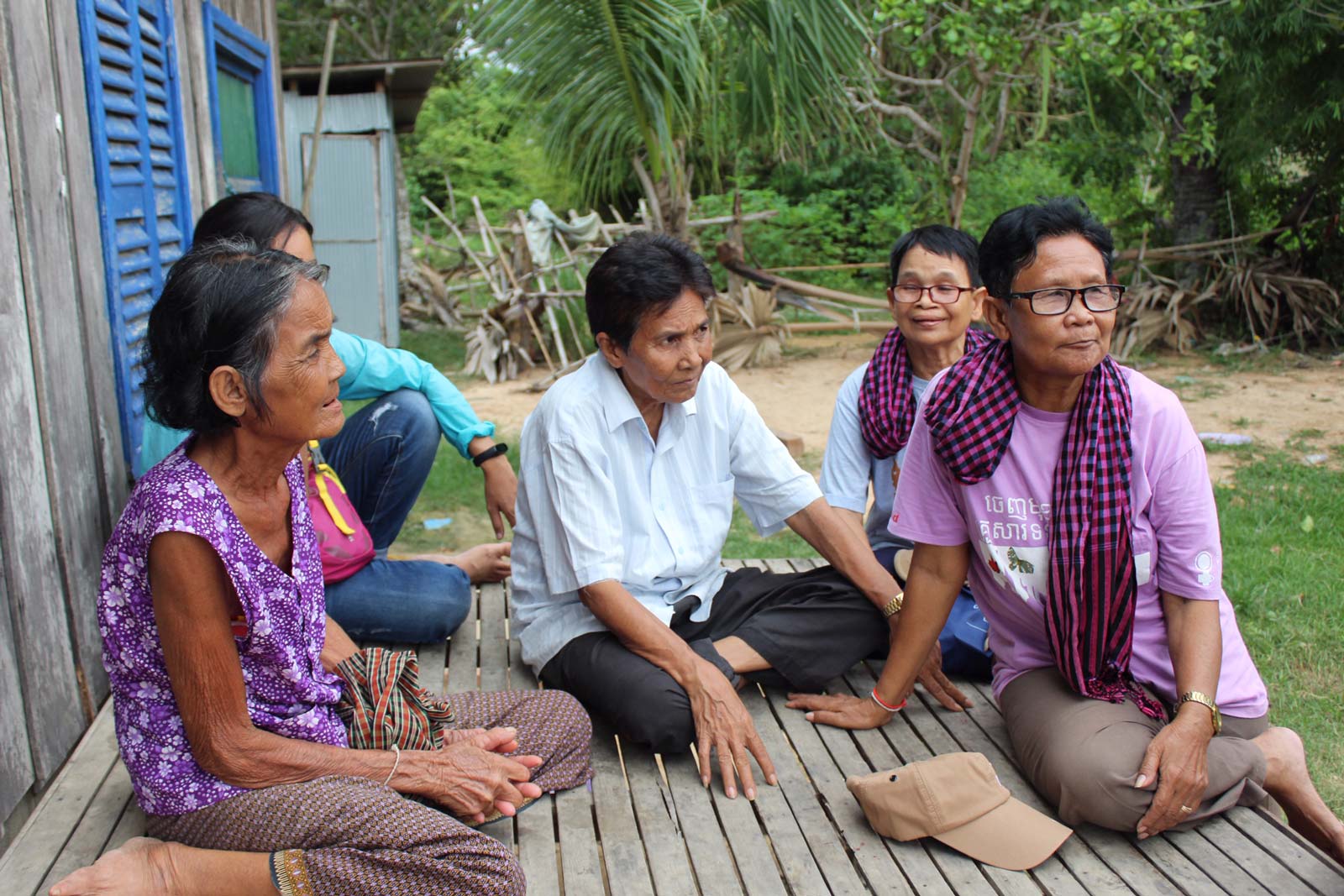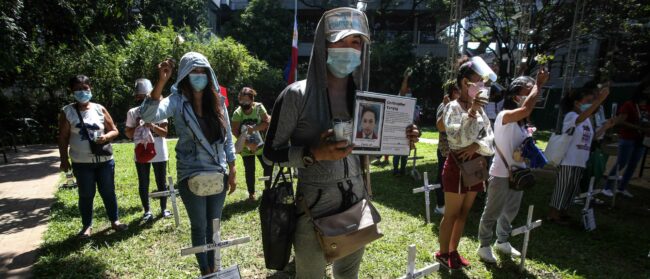Looking out of the car window, rumbling down a bumpy dirt road in Pursat province in Cambodia’s west, Noy Sitha, 68, points to an otherwise unremarkable stretch of a muddy canal and says, “stop”. More than 40 years ago, he had been one of the thousands digging up this irrigation waterway for the Khmer Rouge regime.
The ditch stretches hundreds of kilometres from this province all the way north to the city of Battambang. In 1975, the Khmer Rouge forced Sitha, a transgender man, singer, and activist, from his home in Phnom Penh to work in the young women’s collectives in this village. Now, four decades after the Khmer Rouge’s fall, Sitha strides out of the vehicle, sporting a pink shirt and umbrella – his favourite colour – and halts. “This is where I met my wife,” he declares.
The Khmer Rouge’s short-lived extremist communist agrarian state, Democratic Kampuchea (DK), transformed nearly every Cambodian into a hard labourer under conditions so extreme that as many as 2 million people died of exhaustion, starvation, or execution – almost a quarter of the population.
The gruelling, genocidal world of DK is hardly somewhere one would imagine hearing a love story between a transgender man and a cisgender (that is, non-transgender) woman. Yet remarkably, this place was home to at least three transgender men and one cisgender lesbian woman, all of whom became close friends. Each found love under DK’s authoritarian reign – sometimes with more than one person at a time. Two met the women who remain their wives to this day.
All but one wore their hair cropped and boyish. Because of the Khmer Rouge’s required black uniform and short bob haircut, their masculinity stood out less than it had before the regime took power. One man even recalls feeling more comfortable in his uniform, finally able to choose to wear pants instead of the traditional skirt. Physically strong and especially hardworking, two of the men were promoted to be leaders of their working group. When their superiors suspected – or worse, discovered – their relationships with women, it was this status as exceptional labourers that would save their lives.

The three trans men became particularly close. They took advantage of the five-to-ten-minute breaks they would get in their sometimes 14-hour working days to carve out moments of respite from the horror around them. Sitha gave the other two nicknames based on his own, “Tha”. Chum Si Mun became “Tuon”; Tit Man, “Thorn”.
Despite now living across Cambodia, the three remain great friends. They have gone on to marry women, raise children, grandchildren, and great-grandchildren, and live now as revered members of their communities.
With CamAsean Youth’s Future, a local grassroots activist group, Southeast Asia Globe travelled together with Sitha back to his friend Man’s house in Pursat to revisit the sites of their past. It’s a path littered with memories of joy as well as devastation.
Chum Si Mun’s parents always knew he was a boy. His parents were poor rice farmers, and so he, the second child, left school in the third grade to support his family. A handsome teen, strong farmhand and respected member of his village in Kandal, Si Mun had many girlfriends in his youth. When a well-off man approached his parents to ask for his hand, Si Mun’s parents rejected him. “Our son should not have a husband, but a wife,” they said.
Khmer Rouge guerrillas excavated his entire village in 1975. His mother died during the exodus, the first of four in his family that would die under the regime. In Pursat, DK separated Si Mun from his family to work in a young women’s commune. This was where he met Sitha and Man. Together, they felled jungle, farmed rice and dug irrigation canals, living on a thin diet of rice and little else.
He tells Southeast Asia Globe he had three women partners during the Khmer Rouge regime – at the same time
Si Mun’s strength earned him the position of leader of a working group of roughly 40 people. And it’s not hard to see why – he could do as much or more work as those in the men’s commune. He tells Southeast Asia Globe he had three women partners during the Khmer Rouge regime – at the same time. The ever-watching cadres had no idea; Si Mun and his lovers pretended to be no more than friends and roommates. Although it may seem shocking, stories of multiple partners were common among the four friends. Looking back, Si Mun is unphased. “We just understood each other better then,” he says.
There was a fourth woman who loved him, he says, but the Khmer Rouge forced her into a marriage, as so many men and women were made to couple at the barrel of a gun. As the leader of his working group, it was his job to walk her to the ceremony.
Others, he could save. For three and a half years, he says, Si Mun would sneak into the rooms of those singled out to be killed the night before their execution, warning them of the danger. Some would flee. Others chose to take their own lives rather than face their executioner. Usually, they would stay. They knew they had nowhere else to run.
After the Khmer Rouge fell, one of Si Mun’s girlfriends asked him to flee to the US with her. He refused, determined to remain in his shattered country and find the father who had been taken from him.
Living as they were under an anti-Western, fundamentalist regime, Si Mun and his friends’ stories fly in the face of the widespread myth in Cambodia that being LGBT is a Western invention. Because LGBT locals only recently gained attention in the Kingdom’s media, many assume being LGBT here is a new phenomenon. And even outside of Cambodia, most people would find it unimaginable for anyone to live as an LGBT person under the Khmer Rouge. Yet Sitha, Si Mun and Man testify to the endurance of LGBT people, their love and the communities they forge even under some of the most extreme totalitarianism in modern history.
Sitha was born to a well-respected, charitable family – a fact that would one day save his life. Though they did not have much, the Noy family cared for poorer families when they were stricken by sickness or desperate for a roof over their head.
When the Khmer Rouge liberated Phnom Penh in 1975, the family buried all their items associated with the US-backed Lon Nol regime under the earth. The stakes were high: Sitha and his sister Samnang had been trained as paratroopers under the general’s short-lived Khmer Republic. The two also performed and taught as a traditional dancers, actors, and singers on the radio, playing men’s roles – once even at the Royal Palace. As the city was cleared, the whole family walked back to Takeo province, where they were originally from.
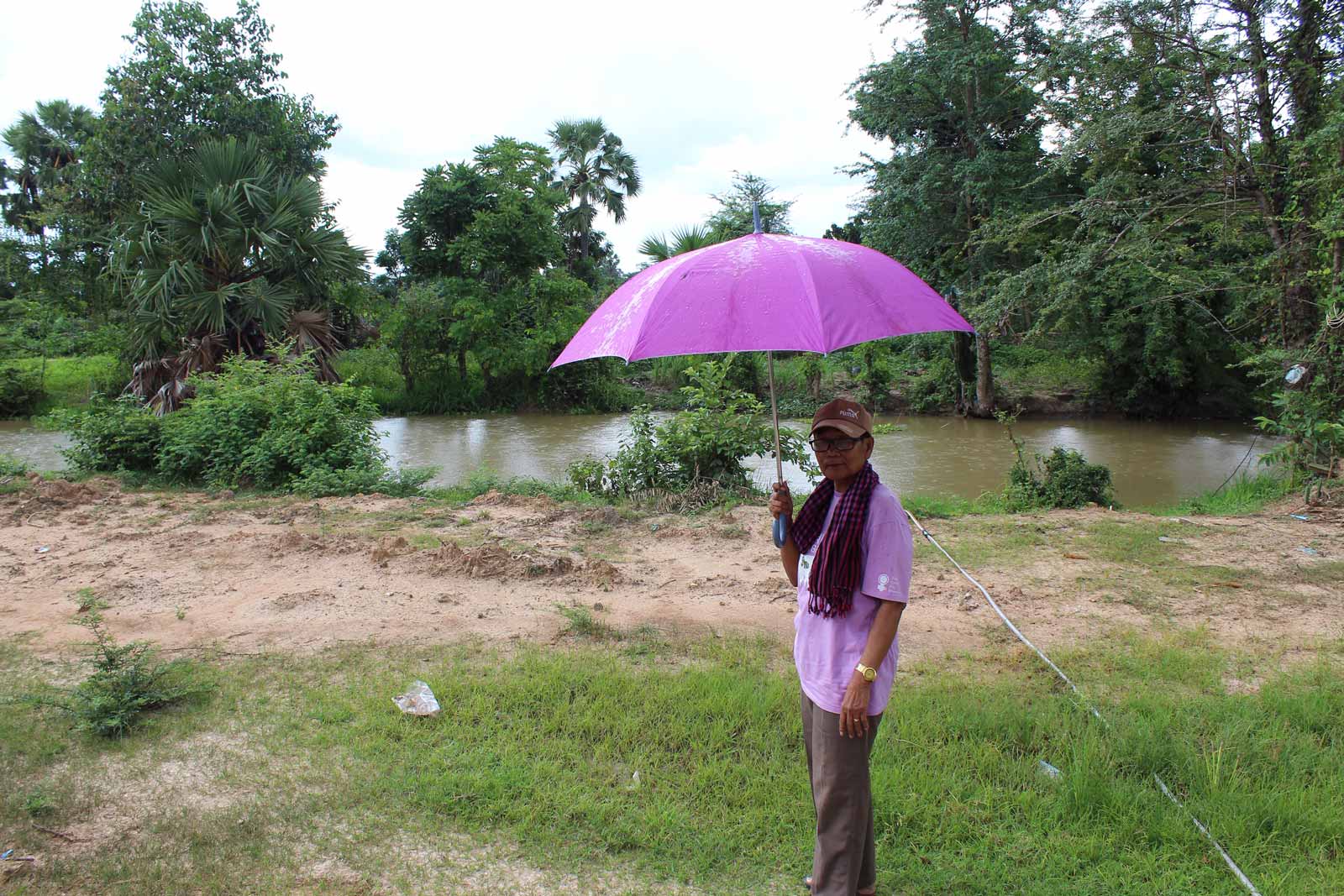
Both Sitha and his sister Samnang were sent to the local killing fields, from which no one ever returned
Because of their affiliation with the Khmer Republic and artistic backgrounds, they should have been first on the list to be killed. Fortunately, one of the Khmer Rouge leaders there had actually been one of the people the Noy family had once let live in their home. Feigning ignorance, the man put the family on a truck to Pursat province. While most of the other trucks to Pursat were really taking the passengers away for execution, the Noy family’s car actually made it to its destination. Along the roadside, they drove past countless dead and decaying bodies. Upon arrival, the Khmer Rouge split the family into different villages. Sitha and Samnang were lucky to be allowed to stay together. They never saw their parents and two of their siblings ever again.
Samnang, a lesbian who now lives in the same commune as him, was unfortunately not available for interview due to health reasons, though she was willing for her name and story to be shared in this article. The three transgender men knew her as well, but did not realise until later that she apparently had at least seven different women partners during the Khmer Rouge period – the most, it seems, of the whole bunch.
Driving around Pursat, we arrive at the small pond where the Khmer Rouge commissioned Sitha and his sister Samnang to sing patriotic songs, recorded through a makeshift contraption powered by a bicycle. With another elderly transgender man activist, Pheng Sanh, standing in place of his sister, he sings for us as much as he can remember. He claims that after the Khmer Rouge fell, a former prisoner of the regime came to thank him for his songs, which were played in the prison. Even though the lyrics were about the Khmer Rouge, he says, something about the purity of Sitha’s and Samnang’s voices sustained the man through his life behind bars.
“I am not sad to be back,” says Sitha. He tells Southeast Asia Globe that his worry is not with the past, but rather the future of the LGBT community. Many challenges face those out of the closet in this conservative, Buddhist nation. Sitha hopes for a future where there is marriage equality, more employment, a support centre for the elderly, and acceptance for LGBT people.
But the past brought problems of its own. In the first village the Khmer Rouge placed them in, Sitha and a married woman fell in love. A dangerous situation, he tried to cut himself away from her. Then someone reported their affair. Because of DK’s policy of executing the traitor as well as their relatives – “in order to pull up the grass, you must also dig out the roots”, the infamous saying went – both Sitha and his sister Samnang were sent to the local killing fields, from which no one ever returned. They starved themselves beforehand in the hope that they could die with dignity.
Sitha claims he watched many people in his commune literally eat themselves to death
Their lives were saved when the husband of the Mey Kong, or Khmer Rouge leader, wrote a two-sentence note to the oxcart driver taking the siblings to their deaths. It ordered him to take the pair to a different village first. Sitha and Samnang’s older brother had befriended the leader of that village, a man of higher position than the one that condemned them to die. He let them off. Sleeping that night in a barn loft with his sister, Sitha dreamed he saw the ghost of his mother, who told him that everything would be alright.
Today, the brilliant green rice paddies of these villages do not let on all the history they carry. Sitha and Man point out the fields where they claim people were taken to be killed every ten days. They run into the Mey Kong who had granted them amnesty when they were condemned and starving, saving both of their lives. It has been 40 years since they last saw each other. The reunion is punctuated with tears.
Sitha met his wife Hong Saroeun in the next village. Their working groups had clashed over whose job it would be to dig the irrigation canal. Later, Saroeun was distributing salt to the different houses and, bitter, put her hands over the bowl of salt when Sitha asked for his portion. Over time, he says, the anger that bound them together evolved into love. He asked that she be moved to his own home. He spoke to one local leader, and then another, who eventually agreed to the request, fully aware of their affair. What Sitha and Saroeun didn’t know, they say, was that she was next on the list to be killed. She moved to his home just two hours before someone came to take her away.
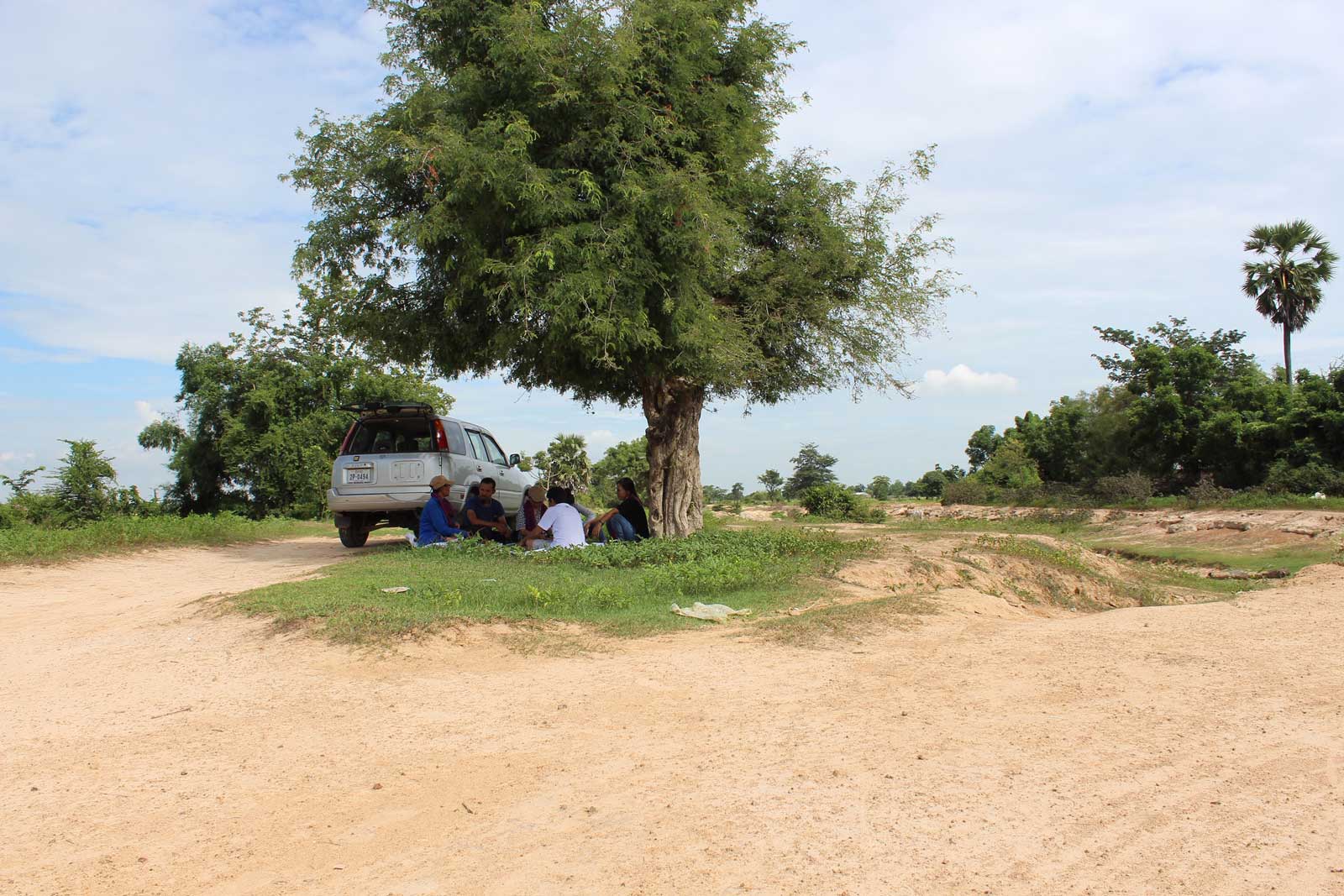
Like Si Mun, both Sitha and his sister were made working group leaders because of their physical strength. In good times, they ate well, because of the respect their work abilities earned them. Most of the time, however, they were hungry, sometimes going three days with nothing to eat. Sitha recalls that when the rice harvest would come in, some would eat so much their starved bodies could not handle it. He claims he watched many people in his commune literally eat themselves to death.
Growing up, Tit Man, 68, would always join his father to get matching haircuts. During recess, he would take off the skirt of his school uniform to run about in the shorts he always wore underneath. His family farmed rice. They never recognised – or, if they did, never contested – his masculinity. He knew who he was since he was eight years old, though he thought he was the only one. He had his first girlfriend at 12.
In his mid-teens, Man had two girlfriends at once – one he would visit the afternoons, the other in the evenings. At 20, however, his parents forced him to marry. His husband, a soldier for the Lon Nol regime, died in combat within the year, leaving behind a son he had never met. When the Khmer Rouge sent Man to work in the young women’s work collectives, he had to give up his newborn to be raised by his mother. His own father, he lost to the Khmer Rouge.
Man met his current wife because they were placed in the same village. He would help her with her work in the kitchen after he had completed his day’s labour. In time, they asked permission to live in the same house.
It was a precarious life lived in secret. One time, Man says, a 17-year old woman who was a local Khmer Rouge leader fell in love with him. Dejected by his refusal, she reported him for suspicious behaviour to her superiors. They sent someone to spy on him for three days. Man, who was sick with fever, pretended he was not home by lying perfectly still the entire time, unable to even lift a hand to slap the mosquitoes who bit at his skin. Finding nothing suspicious, the authorities informed Man of the allegation but let him go with his life.
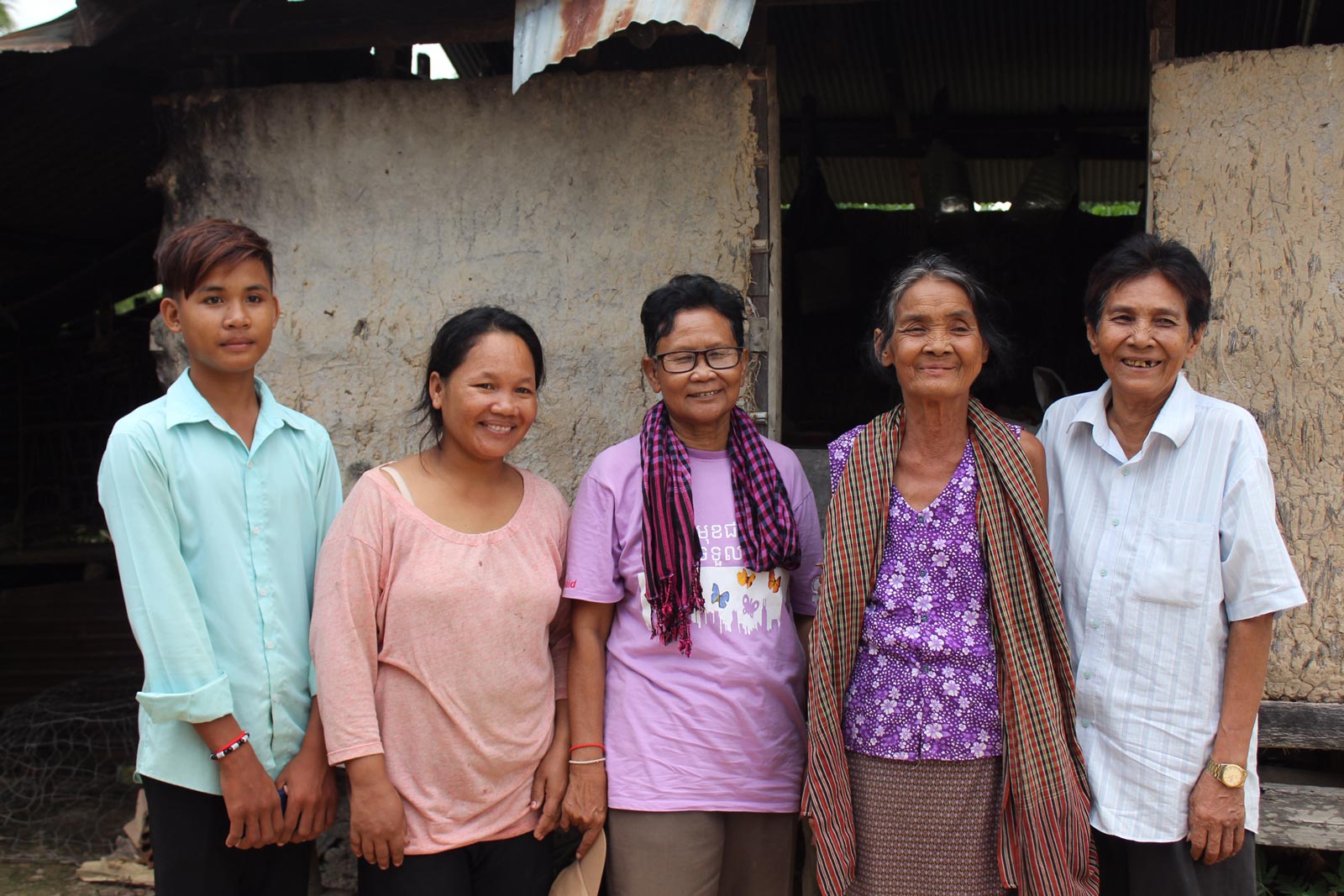
It would be almost four years before the Khmer Rouge would be driven from power. When the Vietnamese tanks arrived in Pursat, everyone scattered. Man was in Siem Reap for three months, separated from his wife. He returned to Pursat to find her and, failing, biked all the way to Takeo province where she was from. In Takeo, he saw his wife’s sister on an oxcart. Despite her sister’s disapproval, Man’s wife chose to return with him to Pursat. Since that day, they have raised Man’s son, seven grandchildren, and two great grandchildren.
Si Mun managed to find his missing father. Now, he makes a good living as a self-taught silk weaver in Kandal province. A respected member of his community and within his family, he was once even asked to be village chief. He has two wives now; one who he lives with, and the other in another province who he visits. Both know about the other, though jealousy does not appear to be a serious issue. He has two adopted children and five grandchildren.
The lives of these LGBT Cambodians stand as incredible exceptions to more common narratives of forced marriage, rejection and discrimination among the community. And while tragic stories outnumber the happy ones, these histories stand as powerful examples of those who survive.
With the support of Srun Srorn, Sophea Phoeng, and Saophorn Phoeng of CamASEAN Youth’s Future.
